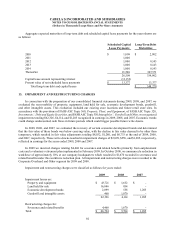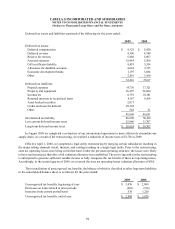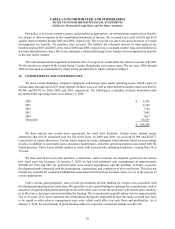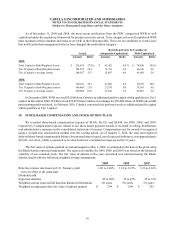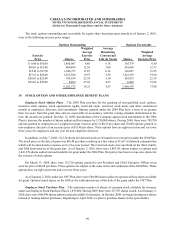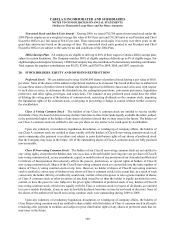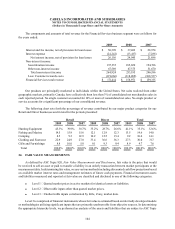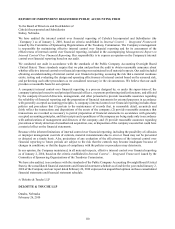Cabela's 2009 Annual Report Download - page 111
Download and view the complete annual report
Please find page 111 of the 2009 Cabela's annual report below. You can navigate through the pages in the report by either clicking on the pages listed below, or by using the keyword search tool below to find specific information within the annual report.102
CABELA’S INCORPORATED AND SUBSIDIARIES
NOTES TO CONSOLIDATED FINANCIAL STATEMENTS
(Dollars in Thousands Except Share and Per Share Amounts)
23. SEGMENT REPORTING
We have three reportable segments: Retail, Direct, and Financial Services. The Retail segment sells products and
services through our retail stores. The Direct segment sells products through e-commerce websites (Cabelas.com and
complementary websites) and direct mail catalogs. The Financial Services segment issues co-branded credit cards.
For the Retail segment, operating costs consist primarily of labor, advertising, depreciation, and occupancy costs of
retail stores. For the Direct segment, operating costs consist primarily of catalog costs, e-commerce advertising costs,
and order processing costs. For the Financial Services segment, operating costs consist primarily of advertising and
promotion, marketing fees, third party services for processing credit card transactions, salaries, and other general
and administrative costs.
Revenues included in Corporate Overhead and Other are primarily made up of land sales, amounts received from
outfitter services, real estate rental income, and fees earned through our travel business and other complementary
business services. Corporate Overhead and Other expenses include unallocated shared-service costs, operations of
various ancillary subsidiaries such as real estate development and travel, and segment eliminations. Unallocated
shared-service costs include receiving, distribution, and storage costs of inventory, merchandising, and quality
assurance costs, as well as corporate headquarters occupancy costs. In 2009, we disposed of our taxidermy business
and the net assets of our wildlife/Americana art prints and art-related products business. The related pre-tax gain and
loss were recorded in the third quarter of 2009.
Segment assets are those directly used in or clearly allocable to an operating segment’s operations. For the Retail
segment, assets primarily include inventory in the retail stores, land, buildings, fixtures, and leasehold improvements.
For the Direct segment, assets primarily include deferred catalog costs and fixed assets. At the end of 2009 and 2008,
goodwill totaling $3,336 and $2,874, respectively, was included in the assets of the Retail segment. At the end of
2007, goodwill totaling $4,474 was allocated $969 to the Direct segment and $3,505 to the Retail Segment. For the
Financial Services segment, assets include cash, credit card loans, retained interests, receivables, fixtures, and other
assets. Cash and cash equivalents of WFB were $371,409 and $402,058 at the end of 2009 and 2008, respectively.
Assets for the Corporate Overhead and Other segment include corporate headquarters and facilities, merchandise
distribution inventory, shared technology infrastructure and related information systems, corporate cash and cash
equivalents, economic development bonds, prepaid expenses, deferred income taxes, and other corporate long-lived
assets. Depreciation, amortization, and property and equipment expenditures are recognized in each respective
segment. The accounting policies of the segments, where applicable, are the same as those described in the summary
of significant accounting policies in our notes to consolidated financial statements. Intercompany revenue between
segments is eliminated in consolidation.


